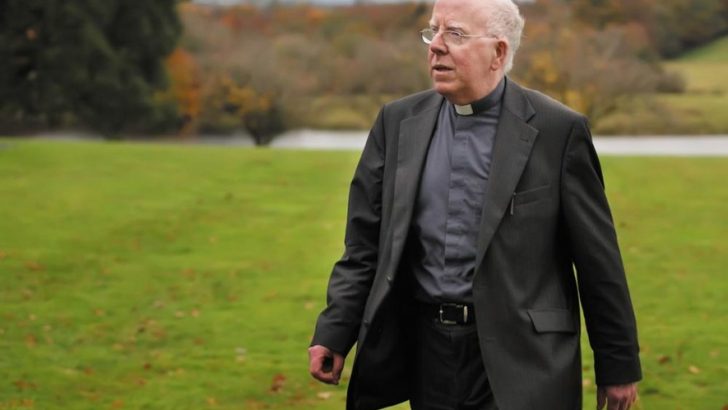One of the country’s smallest dioceses remains in turmoil with questions now being asked about its future, writes Martin O’Brien
This is a Holy Week and Easter like none before in the history of the Diocese of Dromore, and for all the wrong reasons.
The diocese, one of the smallest in the country, headquartered in the city of Newry in Co. Down, is in turmoil.
The traditional Mass of Chrism, which had been cancelled, will now go ahead but the man put in charge of the day-to-day running of the diocese by its departing bishop is, at time of writing, nowhere to be seen, amid growing media scrutiny and a drip feed of damaging fresh disclosures.
One priest summed up the views of many clerics and lay faithful: “There is total confusion and uncertainty and a lack of leadership. The cancellation of the Chrism Mass sends a bad signal.”
Another said: “There appears to be nobody in charge, no direction. The general sense is one of shutdown and confusion”.
It’s in a bid to remedy that confusion that Pope Francis announced on Monday that he has now accepted Dr McAreavey’s resignation and appointed 78-year-old Bishop Philip Boyce, the retired bishop of Raphoe, to administer the diocese.
Dromore has been traumatised for six weeks now after revelations in a television programme of crimes of clerical sex abuse by a deceased priest and their cover-up for perhaps nearly 50 years. (You can catch up on the detailed background by accessing my article ‘Under-fire Bishop McAreavey admits his abuse failings’, The Irish Catholic, February 22, 2018.)
Abuse
On February 13, the BBC Northern Ireland investigative programme Spotlight revealed that Fr Malachy Finnegan, a spiritual director, teacher and then president of St Colman’s College, Newry – the diocesan grammar school – had abused boys at the school and also raped an altar boy, Sean Faloon, over a period of five years in the parochial house in Hilltown, in Clonduff parish, 15km away during his subsequent posting as parish priest there.
The programme and subsequent media revelations led to Bishop John McAreavey tendering his resignation to Pope Francis on March 2. Dr McAreavey in a letter to people, religious and clergy said that Canon Liam Stevenson, the Vicar General will take responsibility for the day to day administration of the diocese.
Canon Stevenson, who taught under Finnegan in St Colman’s and is a former president of the college himself, has dismayed many by refusing to respond to media queries as to whether he knew about Finnegan’s abuse.
Bishop McAreavey’s position, already precarious following Spotlight, became untenable after another BBC programme, Nolan Live, revealed on February 28 that the bishop had permitted Finnegan to concelebrate Mass in Clonduff on the occasion of the parish’s 150th anniversary in 2000, in the church where he groomed Mr Faloon, which is next door to the parochial house where Mr Faloon recalls he was raped.
The next day Dr McAreavey, in a brief statement, issued through his personal solicitors, said he was resigning and followed through with his letter issued at weekend Masses two days later.
One senior cleric who knows the dynamics of the diocese says: “Dromore is dysfunctional at present. The senior priests who rule the roost are all St Colman’s men, they are a little clique and know each other so well. The next bishop must not come from among them because the diocese needs a new broom.”
That is if Dromore with just 22 parishes and not that many more priests escapes being dissolved altogether. Some say that the mid-Down and Mournes part of it would fit neatly into Down and Connor while the Armagh portion would fit just as neatly into, well, Armagh.
Others argue that dissolving the ancient diocese would impede the necessary healing and renewal that must start from within and that it would be a monumental mistake for the dissolution of Dromore – which may happen in the future anyway – to be linked forever to clerical sex abuse.
Talking to figures who are deeply concerned about the situation (and there are many), one word that comes up repeatedly is “confusion” and rightly or otherwise the responsibility for this is left at Bishop McAreavey’s door.
Hours after he announced his resignation, the diocesan website, presumably on Dr McAreavey’s instructions, was changed to say that there was no longer a bishop and that Dromore was sede vacante (the seat is vacant). The official website of the hierarchy, on the other hand, still listed Dr McAreavey as the Bishop of Dromore since no diocese is vacant until the resignation is accepted by the Pope.
The fact of the matter is that Dr McAreavey was indeed, still canonically, bishop as his resignation had not been accepted by the Pope until Monday, although he had chosen, perhaps wisely, not to exercise any of his duties as bishop.
One issue Bishop Boyce will have to address will be the continuing revelations about Finnegan’s sexual and physical abuse of pupils in St Colman’s, highlighted most recently by Conor Murphy, the Sinn Féin politician, who described how Finnegan beat him and tried to sexually groom him.
A leading cleric has told me the Finnegan scandal may yet rival that of Brendan Smyth in its scale.
Every fresh allegation and credible disclosure will strengthen the calls of those such as Clem Leneghan, another former pupil and brother of Dr Mary McAleese, who have demanded a proper independent inquiry which would take place at the appropriate time after the police have completed their work.


 Martin O'Brien
Martin O'Brien Bishop John McAreavey
Bishop John McAreavey 